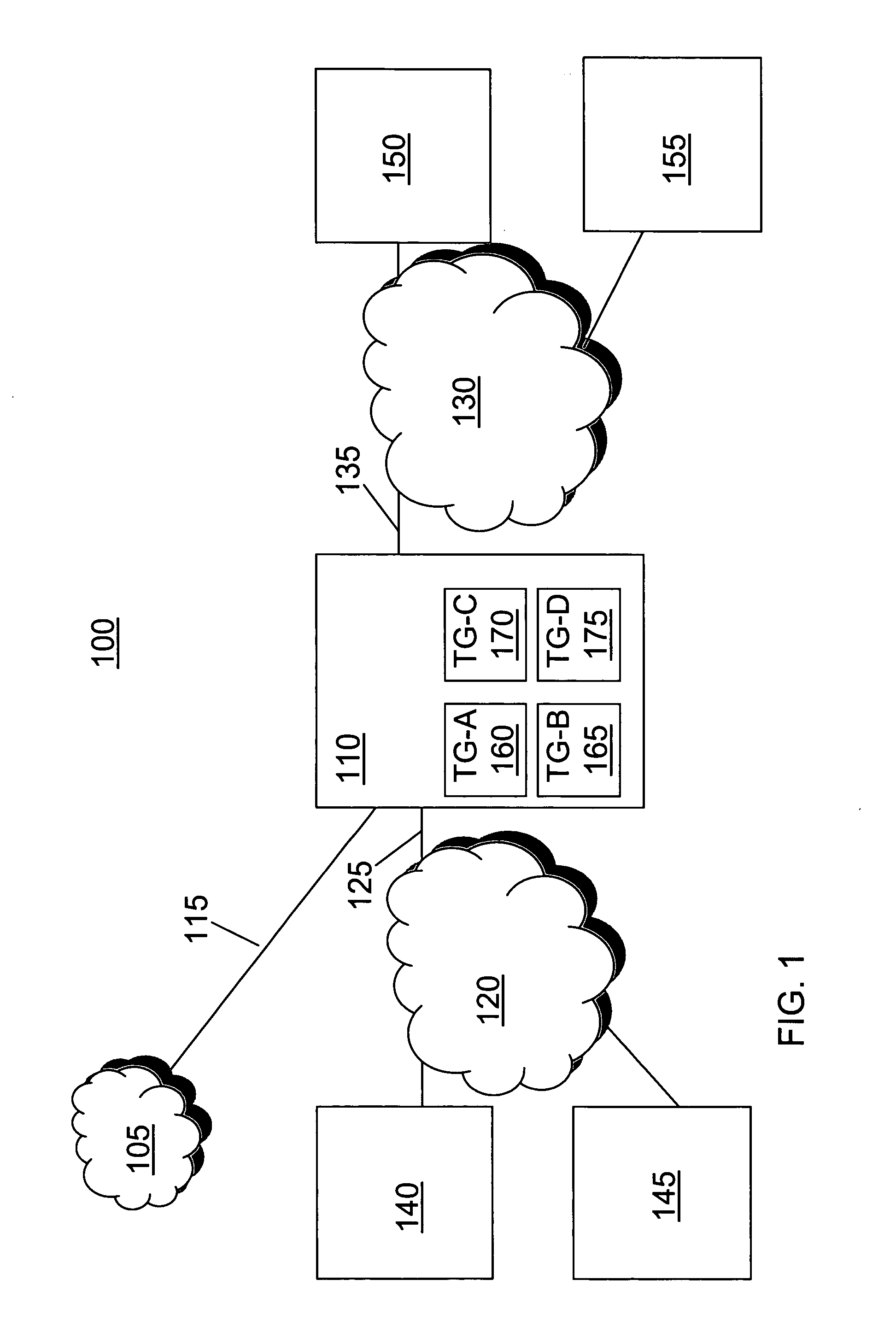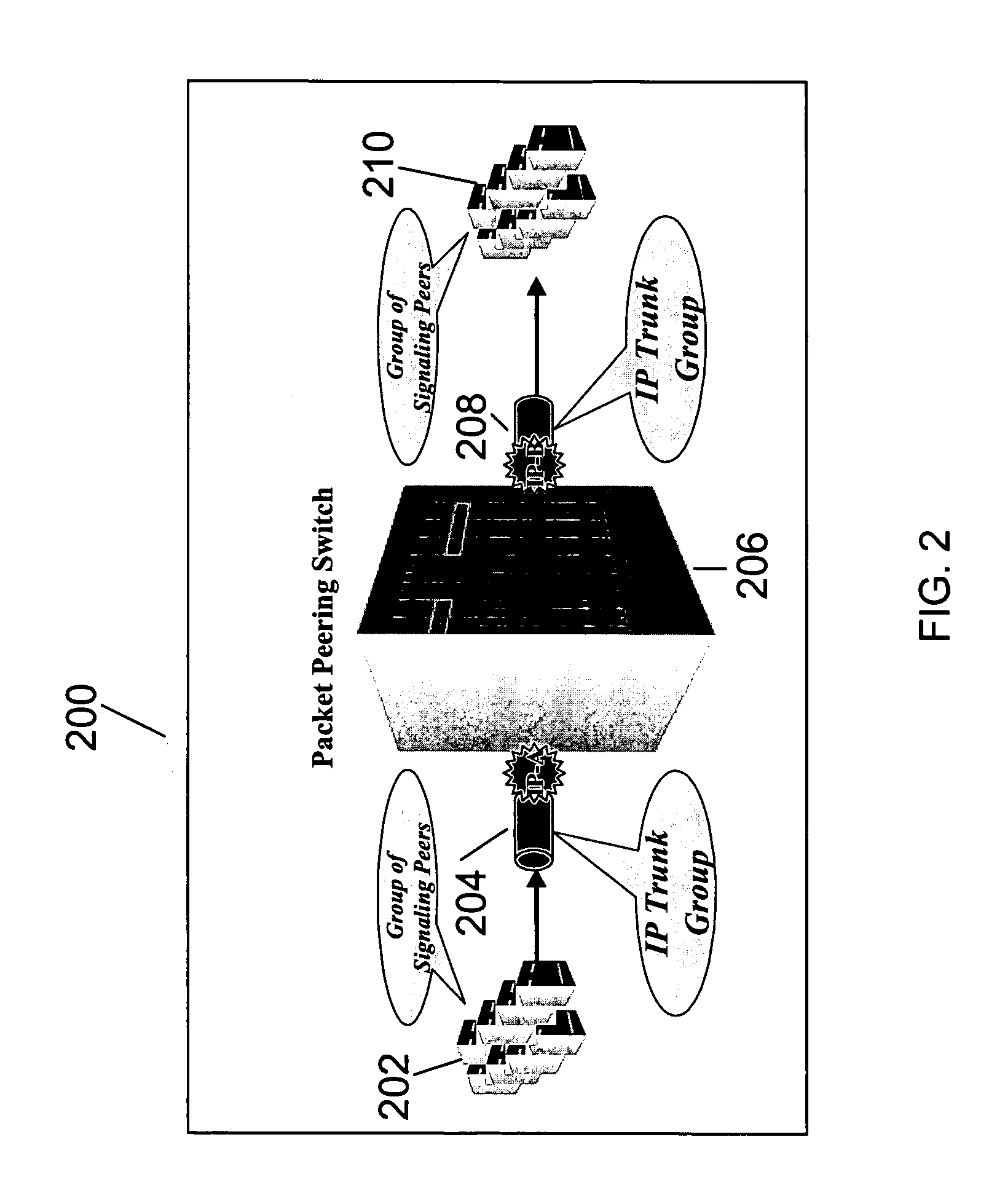Defining logical trunk groups in a packet-based network
a packet-based network and trunk group technology, applied in data switching networks, high-level techniques, sustainable buildings, etc., can solve the problems of physical limitations on the amount of data, call disconnections, and based on the capacity of the circuit, so as to improve network resource management efficiency, increase scalability, and improve the effect of scalability
- Summary
- Abstract
- Description
- Claims
- Application Information
AI Technical Summary
Benefits of technology
Problems solved by technology
Method used
Image
Examples
Embodiment Construction
[0041]FIG. 1 depicts a system 100 that includes exemplary networks and devices associated with routing data associated with a call through a packet-based network. Data associated with a call can include one or more sets of data packets and may be referred to herein as data packets, a set or sets of data packets, a call or calls, a call leg, or some combination of these terms. Although in general, the call data described in this description is referencing media data (e.g., voice, video), the call data may also include signaling data without departing from the scope of the invention. The system 100 includes a PSTN 105 that is in communication with a media gateway 110 over communication channel 115. In some examples, the communication channel 115 includes PSTN trunk groups. The gateway 110 can be, for example, a GSX9000 sold by Sonus Networks, Inc., of Chelmsford, Mass.
[0042] The gateway 110 is in communication with a first packet network 120 over a communication channel 125. The gate...
PUM
 Login to View More
Login to View More Abstract
Description
Claims
Application Information
 Login to View More
Login to View More - R&D
- Intellectual Property
- Life Sciences
- Materials
- Tech Scout
- Unparalleled Data Quality
- Higher Quality Content
- 60% Fewer Hallucinations
Browse by: Latest US Patents, China's latest patents, Technical Efficacy Thesaurus, Application Domain, Technology Topic, Popular Technical Reports.
© 2025 PatSnap. All rights reserved.Legal|Privacy policy|Modern Slavery Act Transparency Statement|Sitemap|About US| Contact US: help@patsnap.com



